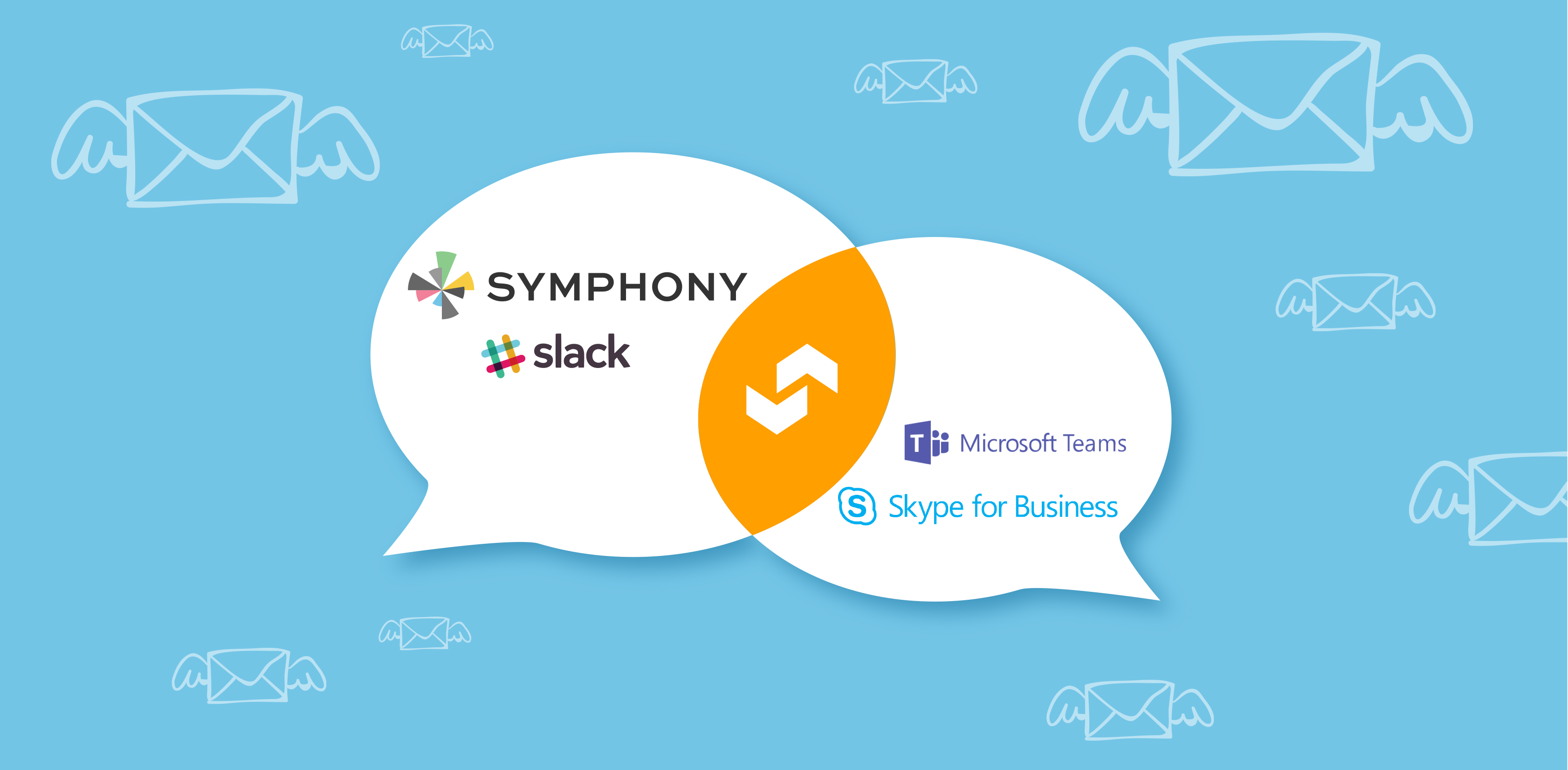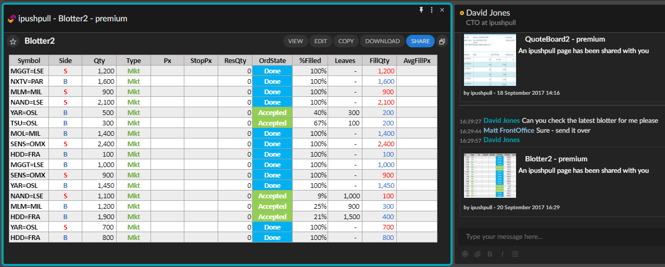
It used to be so easy. If you wanted to share a document or a spreadsheet with your colleagues or clients you had one choice – attach it to an email and hit send. Email is reasonably fast and reliable and accessible by everyone, whether they are running Gmail in a browser or Outlook on a desktop. But times have changed. Driven by version control frustrations, email fatigue, security concerns and the desire for faster, more interactive communication, email is increasingly being overshadowed by a growing range of desktop chat applications. As chat replaces email, the range of communication and collaboration options available to businesses is radically expanding.
So how can you share information when you don’t know how your customers are going to access it? That’s the problem we at ipushpull are solving. We let our customers securely share live data with their networks regardless of the apps they use to consume it. We call it ‘real-time data interoperability.
Explosive Growth of Chat apps and Collaboration Platforms – Chat replaces email
While the rise of consumer mobile messaging apps like WhatsApp has been hogging the headlines, an almighty battle has been brewing for dominance of the enterprise messaging and collaboration market. In the years since Slack’s launch in 2013 it’s been joined by a range of heavyweight competitors including Symphony, Microsoft Teams, Facebook Workplace and, most recently, Atlassian’s Stride. While each company has differing ambitions for their platforms, they all aim to reduce the number of emails sent internally and between businesses.
Symphony’s CEO David Gurle has said:
“People want much richer communication than email and there’s really no secure, compliant alternative in the market today. That’s the reason Symphony exists. If there’s anything we’re going to disrupt it’s going to be the different messaging tools across enterprises.”
More succinctly, Stewart Butterfield of Slack predicted at Slack’s inaugural ‘Frontiers’ conference last week:
"Chat channels will replace email by 2025.”
Sharing Data, not Files
So in this post-email, post-attachment future, how can people securely share their information across applications and ensure that it’s always up-to-date? ipushpull is tackling this problem, with the launch of our Symphony app in June, and the release of the new version of our Slack app in September. Both apps enable our customers to access their latest business data regardless of source and securely share it with their networks.
No more Walled Gardens
We quickly realised that targeting every chat app with the same ‘lowest common denominator’ integration would be wrong. Each platform has its own technical strengths and weaknesses, and each is used by different user communities with different requirements and concerns.
On the technical side, Symphony allows its partners to integrate HTML5 applications within its platform, enabling us to build a rich user experience that facilitates collaboration and minimises context switching.
Slack doesn’t support such integrations (yet) but we’ve managed to stretch its capabilities and are the only application in their app directory that supports real-time updates.
Most of Symphony’s customers are based in the financial markets where time is critical and security and compliance are just as important. ipushpull’s integration with Symphony enables users to stream live updating data to their network from applications like Microsoft Excel, and collaborate in real-time without leaving the application and without compromising their security.
Real-time Data Interoperability
The move to messaging and collaboration platforms only solves half the problem of email overload. Real gains are made when you replace attachments with something real-time and much more interactive. By going beyond files and connecting data, ipushpull allows end users to reduce application context switching and streamline workflow, enabling true collaboration.
The ultimate result is improvement in productivity and efficiency, accessing live data securely regardless of application. We call it real-time data interoperability.

-1.png?width=2000&name=Untitled%20(45)-1.png)
.png?width=1200&height=628&name=Blog%20header-1%20(27).png)


.png)
.png)


